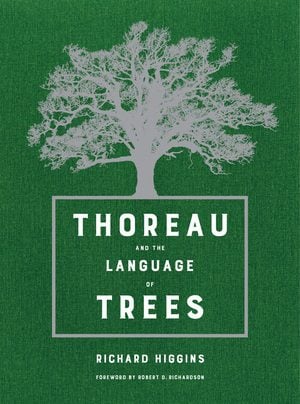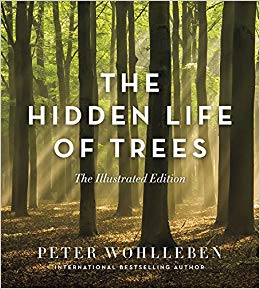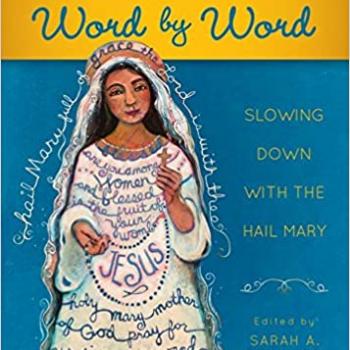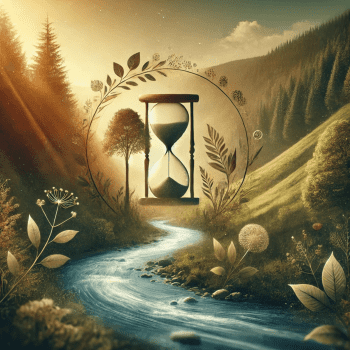As I have been learning more about the hidden life of trees, I have also been paying more attention to how much trees have meant to people over time. Most recently, I was watching the Springsteen on Broadway recording on Netflix, and I was not surprised that as “The Boss” waxed nostalgically about his life, one vignette prominently featured a tree. Remembering his childhood home, he recalled that,
In our front yard, only a few feet from our porch, stood the grandest tree in town. It was a towering beautiful copper beech tree. And on sunny days I lived under its branches. Its roots were forts for my soldiers and a corral for my horses. And I was the first on my block to climb high into its upper reaches, leaving behind a world that I didn’t care for much already. Up at the top, I had the wind in my face and all the dreaming room that you could want. On slow summer nights, I’d sit beneath its arms with my pals like the cavalry at dusk just listening and listening for the evening bells of the ice cream man and my grandmother’s voice calling me in to bed.
Let your mind drift back: in your mind’s eye can you picture trees that have been significant in your life? Can you remember what they looked like in different seasons of the year? Perhaps you can even remember the feel of a particular tree’s bark against your hand—or the smell of its leaves or flowers in the spring. I can so easily recall the Dogwood tree from the front yard of one of my childhood homes, the Magnolia tree at my maternal grandmother’s house, the pecan trees in my paternal grandparent’s yard, the towering oak tree at my elementary school from whose branches hung curls of Spanish moss.
But you don’t have to grow up with a tree for it to be a beloved friend. Although I have only been a resident of downtown Frederick for three years, I was devastated along with many of my neighbors this past summer when I learned that that the massive, iconic weeping willow tree near the Baker Park Bell Tower had fallen during a storm. And it felt right to learn that both a vigil and funeral were quickly planned and held for this tree that meant so much to so many people for more than 60 years. Does mourning a tree seem strange? The more I learn about trees, the more appropriate such responses seem.
And as significant as an individual tree can be, the larger mysteries of trees are in the plural: the magic not only of a tree, but of forests, when trees are given the time and space to grow naturally together over immense spans of time in the wild. And I can again easily bring to mind beloved forests—from the acres of woods behind one of my childhood homes in South Carolina, to the forests surrounding my childhood summer camp in Black Mountain, North Carolina, to the holy majesty of Muir Woods with its old growth redwoods which I visited often while completing my doctoral work in the Bay Area.
The love of trees that I’m espousing feels at home in the Unitarian Universalist congregation, where I serve as minister. After all, one of our most influential forebears, from the Unitarian half of our heritage, is Henry David Thoreau (1817-1862), whose love of trees and forests was legendary. Notice the subtitle of his most famous book: Walden; or, Life in the Woods (1854). There was a sense, as well, in which his choice to remain “rooted” in his beloved hometown of Concord, Massachusetts emulated the stability, depth, and richness of a tree’s own rootedness to one particular spot on earth (1).
 As Richard Higgins has detailed in his recent book, Thoreau and the Language of Trees (University of California Press, 2017), “Thoreau wrote prolifically about trees for a quarter century, from 1836 to 1861. He observed them closely, knew them well, and described them in detail…. He saw them as his friends and even as ‘distant relations’” (2-3). He once wrote, “What cousin of mine is the shrub oak” (38)?
As Richard Higgins has detailed in his recent book, Thoreau and the Language of Trees (University of California Press, 2017), “Thoreau wrote prolifically about trees for a quarter century, from 1836 to 1861. He observed them closely, knew them well, and described them in detail…. He saw them as his friends and even as ‘distant relations’” (2-3). He once wrote, “What cousin of mine is the shrub oak” (38)?
I invite you to hear just a few excerpts from Thoreau’s extensive writing about trees, and notice if his observations resonate with some aspects that you have noticed about trees through the seasons and years:
- Observing a hemlock during winter: “What singular regularity in the outlines of a tree!”
- Or during the spring: “How bright, how full of freshness, tender promise and fragrance is the new world!” “It is remarkable that many beech and chestnut oak leaves which recently expanded have already attained their full size!! How they lurch themselves forth to the light. How suddenly Nature spreads her umbrellas!”
- Or in summer: “Ah, those fugacious universal fragrances of the meadows and woods!” “What a glorious crimson fire as you look up to the sunlight through the thin edges fo the scales of [a black spruce’s] cones! So intensely glowing in their cool green beds!” (36-37)
- Thoreau also wrote movingly of how studying trees in the autumn can teach us how to die well: “How poetically, how like saints or innocent and beneficent beings, they give up the ghost!” (91)
There is so much more to say about Thoreau and trees, but I will limit myself to sharing with you my favorite anecdote of his fierce commitment to forests:
When Harvard College appointed a new processor of natural history, Thoreau said it made no sense to hire someone to lecture on oaks while the best specimens of the tree were being cut around Massachusetts. “It is like teaching children Latin and Greek, while we burn the books printed in those languages.” (55)
And for those who do watch Springsteen on Broadway, there is a similarly poignant bookend near the end of the show in which he returns to his hometown as an adult only to discover that his beloved Copper Beech tree—which had been there many years before his birth and which he expected to be there many years after his death—had been cut down.
 To delve more deeply into the mysteries of trees, which have meant so much to so many—let us turn now from the nineteenth-century forests of Concord and the twentieth-century suburbs of New Jersey—to today. The person who has taught me the most about trees in recent years is the ecologist Peter Wohlleben. His 2016 book The Hidden Life of Trees is one of those remarkable books that shifts forever the way you experience the world. I can’t recommend it highly enough. There is also a condensed, illustrated edition out this year that combines excerpts of the original book with full-page photos.
To delve more deeply into the mysteries of trees, which have meant so much to so many—let us turn now from the nineteenth-century forests of Concord and the twentieth-century suburbs of New Jersey—to today. The person who has taught me the most about trees in recent years is the ecologist Peter Wohlleben. His 2016 book The Hidden Life of Trees is one of those remarkable books that shifts forever the way you experience the world. I can’t recommend it highly enough. There is also a condensed, illustrated edition out this year that combines excerpts of the original book with full-page photos.
One of the first keys for learning more about the hidden life of trees is that compared to us humans, trees are slow. But there’s a good reason why: one of the oldest trees on Earth is a Spruce in Sweden that has been estimated to be more than 9,500 years old. “With such a luxury of time on their hands, [trees] can afford to take things at a leisurely pace. The electrical impulses that pass through the roots of trees, for example, move at the slow rate of one-third of an inch per second” (vii).
The relatively slow pace of trees can lead us to misperceive them as much more inanimate than is the case in reality, but those one-third of an inch per second electrical impulses—ultra slow moving as they may be—are one of our first glimpses into the hidden life of trees. It turns out that trees use electrical impulses as one of their many methods of communication, which also include senses of smell and taste:
If a giraffe starts eating an African acacia, the tree releases a chemical into the air that signals that a threat is at hand. As the chemical drifts through the air and reaches other trees, they “smell” it and are warned of danger. Even before the giraffe reaches them, they begin producing toxic chemicals. Insect pests are dealt with slightly differently. The saliva of leaf-eating insects can be “tasted” by the leaf being eaten. In response, the tree sends out a chemical signal that attracts predators that feed on that particular leaf-eating insect. (vii – viii)
Trees may be slow, but they have a lot going on.
More astonishing still is that the relationship between trees that grow naturally together in the wild is incredibly intricate—really intimate. Wohlleben calls it the “wood wide web.” Tree have evolved to take care of one another, “sometimes even going so far as to nourish the stump of a felled tree for centuries after it was cut down by feeding it sugars and other nutrients…. [but] only some stumps are thus nourished. Perhaps they are the parents of the trees that make up the forest of today” (viii).
To share with you some of the discoveries currently being made about trees, Wohlleben writes that:
The roots are the most important part of a tree. Conceivably, this is where the tree equivalent of a brain is located. Brain? you ask. Isn’t that a bit far fetched? Possibly, but we know that trees can learn. This means they must store experiences somewhere, and therefore, there must be some kind of a storage mechanic inside the organism. Just where it is, no one knows, but the roots are the part of the tree best suited to the task….
[Specifically,] researchers at the University of Bonn measured electrical signals that led to changes in behavior after they were processed in a “Transition zone.” If the root encounters toxic substances, impenetrable stones, or saturated soil, it analyzes the situation and transmits the necessary adjustments to the growing tip. The root top changes direction as a result of this communication and steers the growing root around the critical areas. (82-83)
But it gets more fascinating still: the Australian scientist Dr. Monica Gagliano has published research about mimosas—not the champagne and orange juice cocktail, nor the so-called Mimosa tree common throughout the American south, but the tropical creeping herb. Mimosa plants are much easier to study in laboratory conditions than large trees. What’s fascinating is that Gagliano’s stimulus-responses tests of interacting with the plants using water, the mimosas would “remember and apply their lesson weeks later, even without any further tests” (47-48). So something interesting is going with trees and memory even if we don’t yet fully understand.
I will readily confess that one might argue that this perspective is absurd anthropomorphism, projecting human traits on to trees and plants. But by no means is this claim a new-fangled idea. Indeed, less than two years before Darwin’s death in 1882, he published a book on The Power of Movement in Plants in which he concluded, along the same lines as Wohlleben, that “It is hardly an exaggeration to say that the tip of the radical [root]…acts like the brain of one of the lower animals…receiving impressions from the sense organs and directing the several movements” (Safina 24). From this perspective—taking Darwin’s theory of the “descent of man” seriously—it is not surprising that all of life is on a spectrum of thinking and feeling because all of life can be traced back to a common ancestor on the evolutionary “tree of life.” If we are all part of one large “tree of life,” then it begins to seem more natural than odd for life in the Plant Kingdom to have evolved aspects of life (like versions of memory, taste, and smell) that are also present in the Animal Kingdom.
The upshot is that the hidden life of trees is much more nuanced and complex than I learned in school. There is a lot going on, especially in the root networks beneath the soil. And I hope you have been inspired to learn more. Wohlleben writes,
I encourage you to look around where you live. What dramas are being played out in the wooded areas you can explore? How are commerce and survival balanced in the forests and woodlands you know? ….Slow down, breathe deep, and look around. What can you hear? What do you see? How do you feel? (x)
Along those lines, I recently learned that less than a tenth of a mile from my house—measuring 77 feet high and 11 feet in trunk circumference—is the largest Sugarberry tree in the state of Maryland. I passed this tree countless times without realizing how remarkable and worth knowing about it is. Another nearby tree worth noticing is the English Elm at Frederick High School—or the oldest and largest Ginkgo tree in the U.S. on West 2nd Street near Market Street in my hometown.
And these big solo trees are impressive, but one of the most important takeaways from The Hidden Life of Trees is that these isolated trees are nothing compared to the magic that happens naturally in and among the trees of old growth forests, which desperately need our protection and support. In the words of the environmental prophet Wendell Berry, “
Invest in the millennium. Plant sequoias.
Say that your main crop is the forest
that you did not plant,
that you will not live to harvest.
Say that the leaves are harvested
when they have rotted into the mold.
Call that profit. Prophesy such returns.
Put your faith in the two inches of humus
that will build under the trees
every thousand years….
He ends this poem, titled The Mad Farmer Liberation Front, with these words: “Practice Resurrection.” For Berry, planting and protecting old growth forest is what a genuine resurrection for this planet might look like. May we increasingly live out of a felt sense of connection with the vibrant interdependent world of nature all around us—that we might protect the diverse forms of life on this planet.
For Further Study
“Octopuses & Other Minds: “The Deep Origins of Consciousness”
The Rev. Dr. Carl Gregg is a certified spiritual director, a D.Min. graduate of San Francisco Theological Seminary, and the minister of the Unitarian Universalist Congregation of Frederick, Maryland. Follow him on Facebook (facebook.com/carlgregg) and Twitter (@carlgregg).
Learn more about Unitarian Universalism: http://www.uua.org/beliefs/principles
















